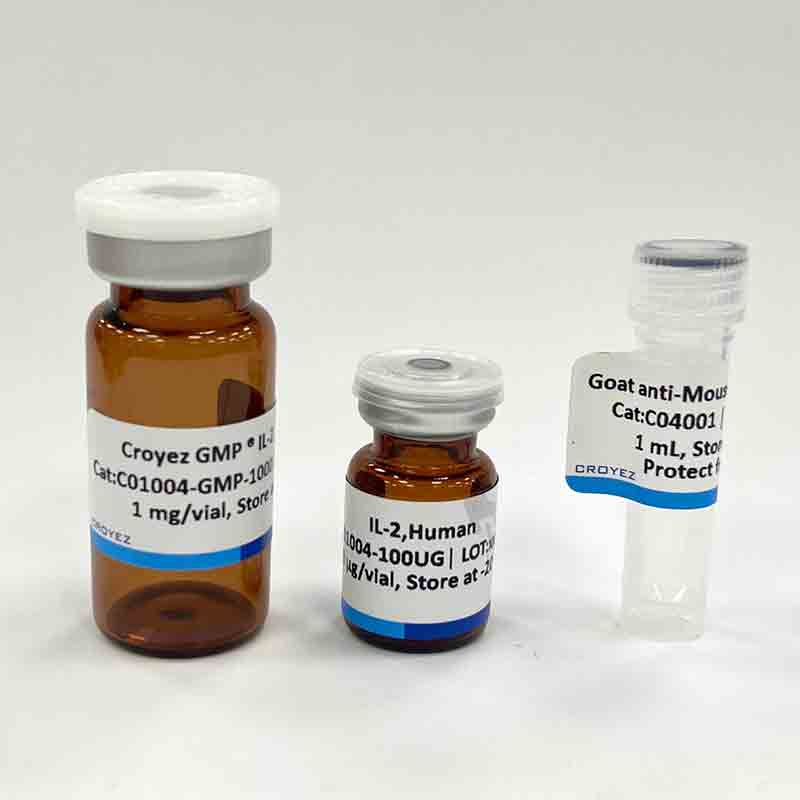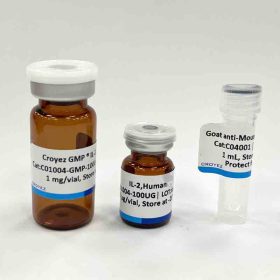CXCL9, also named Monokine, is a member of the CXC chemokine family and is induced by gamma interferon (MIG). Following induced by IFN-gamma, this chemokine can attract T-cells . CXCL9 has close relationship with two other CXC chemokines named CXCL10 and CXCL11, additionally they all elicit their chemotactic functions by interacting with the chemokine receptor CXCR3. CXCL9 is also a cytokine that affects the growth, movement, or activation state of cells participating in immune and inflammatory response and work as a chemoattractant of activated T-cells.
Sequence:
TLVIRNARCSCISTSRGTIHYKSLKDLKQFAPSPNCNKTEIIATLKNGDQTCLDPDSANVKKLMKEWEKKINQKKKQKRGKKHQKNMKNRKP
KTPQSRRRSRKTT with polyhistidine tag at the N-terminus
Source:
Escherichia coli
Endotoxin Test:
<0.1 EU per 1 μg of the protein by the LAL method.
Activity:
Measure by its ability to chemoattract BaF3 cells transfected with mouse CXCR3. The ED50 for this effect is <0.3 μg/mL.
Purity:
>98% as determined by SDS-PAGE. Ni-NTA chromatography
Formulation:
The protein was lyophilized from a solution containing 1X PBS, pH 7.4.
Reconstitution:
It is recommended to reconstitute the lyophilized protein in sterile H2O to a concentration not less than 100 μg/mL and incubate the stock solution for at least 20 min to ensure sufficient re-dissolved.
Storage:
Lyophilized protein should be stored at -20°C. Upon reconstitution, protein aliquots should be stored at -20°C or -80°C.
Note:
Please use within one month after protein reconstitution.





